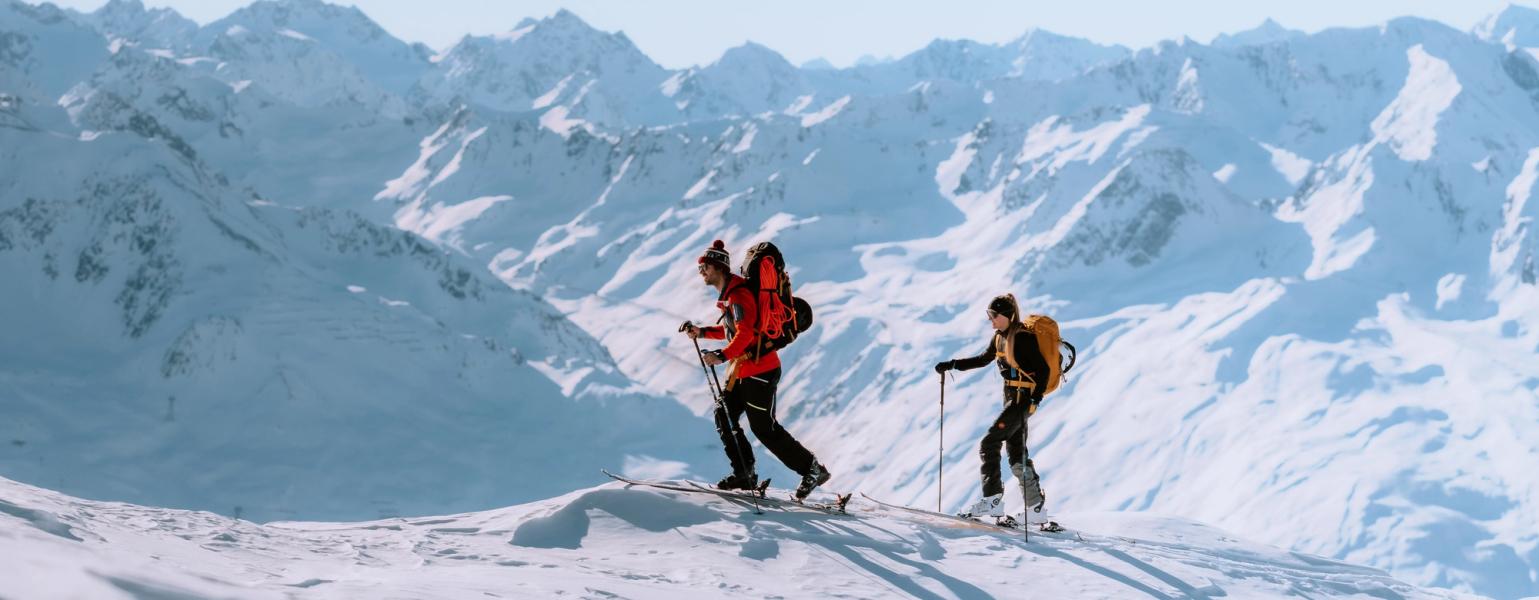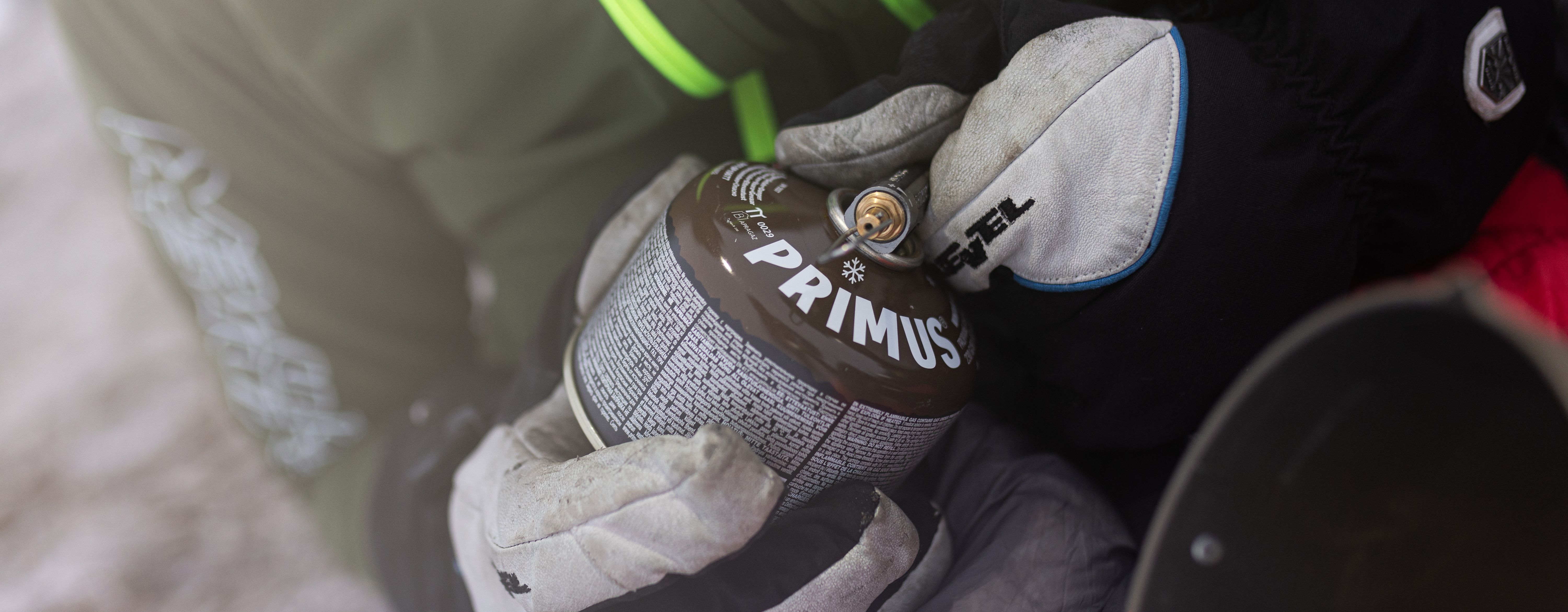

PRIMUS
Winter hiking: the art of staying warm
Snow-covered landscapes, crisp air, and a serene atmosphere – winter adventures offer a unique experience to explore the great outdoors. However, staying warm in the cold can be challenging. This article will share 10 tips to stay warm during your winter hiking expedition.1. Plan ahead and be prepared
Before embarking on your winter expedition, thorough planning is essential to ensure your safety and enjoyment. By planning ahead and being prepared for various scenarios, you can mitigate potential risks and create a safer, more enjoyable winter expedition experience. Here are some key points to consider when planning your trip:
Research your destination: Familiarize yourself with your chosen location’s terrain, weather patterns, and potential hazards. Check the weather forecast regularly in the days leading up to your trip and be prepared to adjust your plans if necessary.
Create a detailed itinerary: Outline your daily routes, planned campsites, and any alternative routes in case of emergency. Share this information with a trusted contact who can alert authorities if you fail to return on time.
Learn about potential risks: Educate yourself on the risks associated with winter expeditions, such as hypothermia, frostbite, and avalanche hazards.
Pack essentials: In addition to your regular camping gear, make sure to pack essential items for winter expeditions. Create a checklist to ensure you don't forget any crucial items.
2. Invest in high-quality winter gear
As we have learned, one of the essential points is to pack the right things. This brings us to the packing list. High-quality winter gear is vital for staying warm in cold conditions. Invest in a good-quality, insulated sleeping bag rated for temperatures below the expected lows of your trip. For additional warmth, use a sleeping bag liner. A sleeping pad with a high R-value will provide additional insulation from the cold ground. Furthermore, ensure your tent is designed for winter camping, featuring sturdy construction, a strong frame, and proper ventilation to reduce condensation.
3. Invest in high-quality winter cooking equipment
Having the appropriate kitchen equipment for your winter expedition can significantly enhance your comfort and convenience in the cold. Start by choosing a reliable stove that performs well in low temperatures. The same applies to fuel that has to function reliably in cold weather. An example is the Primus Winter Gas which we developed to increase the performance of gas stoves at lower temperatures.
Additionally, opt for insulated containers to keep your hot beverages and meals warm for extended periods. Lastly, pack a lightweight, durable cooking set with a pot, pan, and utensils specifically designed for winter camping. Investing in proper winter kitchen equipment ensures that preparing and enjoying hot meals becomes a hassle-free, enjoyable experience during your adventure.
4. Layer up for warmth and flexibility
Layering is a critical strategy to stay warm during winter expeditions. Start with a moisture-wicking base layer to keep sweat away from your skin, followed by an insulating mid-layer to trap heat. Finish with a waterproof, breathable outer layer to protect against wind and precipitation. This system allows you to easily adjust your clothing to regulate your body temperature throughout your journey.
5. Keep your extremities warm
Your hands and feet are more susceptible to cold than the rest of your body. Use hand and foot warmers to keep them warm, or consider wearing a pair of liner gloves and socks beneath your insulated ones. Additionally, wear a warm hat or balaclava to retain heat, as a significant amount of body heat can be lost through the head. By the way: It's worth noting that all Primus Expeditions stoves are designed to be used with gloves.
6. Stay dry to stay warm
Moisture can quickly sap your body heat, so staying dry is essential in cold weather. Remove wet or sweaty clothes as soon as possible and replace them with dry ones. Keep a set of dry clothes for sleeping to ensure a warm, comfortable night's rest. Moreover, be mindful of your footwear, as wet boots can lead to cold feet. Dry them out overnight if possible.
7. Fuel your body with high-energy foods
Your body needs energy to produce heat, so consuming nutrient-dense foods is crucial during a winter expedition. Snack regularly on energy bars, nuts, and dried fruits to maintain your body's furnace, and make sure to eat hot, nutritious meals. This brings us back to the right cooking equipment which is essential for winter hiking. Only if you eat warm food regularly will you stay warm long-term.
That also applies to hydration. Staying well-hydrated is important, as dehydration can make you feel colder. Drink water frequently, and consider warm, non-caffeinated beverages like herbal tea to help maintain your core temperature.
8. Choose the right camp spot for warmth and safety
Selecting the ideal camp spot is an essential part of staying warm and safe during your winter hike. Keep the following factors in mind when looking for a place to set up camp:
Wind protection: Seek out a location that is sheltered from prevailing winds. Use natural barriers such as dense tree cover, large rocks, or hills to block wind and create a more comfortable environment.
Natural insulation: Snow walls can be built around your tent to improve insulation further and protect you from the elements.
Sun exposure: Set up camp in a location that will receive sunlight, particularly in the morning. This will help to warm your campsite and make it easier to start your day in a warmer environment.
Water source: Select a campsite near a water source to reduce the need to melt snow for drinking and cooking. Be mindful of potential hazards such as thin ice or unstable snow bridges over water, and always practice safe water collection techniques.
9. Cold outside, warm inside
Take the time to arrange your sleeping area thoughtfully by placing personal items or extra clothes next to you (or even in the sleeping bag), and storing your boots and other gear in a waterproof bag to keep them dry overnight.
10. Warm your water bottle and bring it to bed
Heating water in a bottle before bedtime and placing it in your sleeping bag is a clever trick to stay warm throughout the night. The heated bottle will provide extra warmth during the night, but it also means you won't have to melt snow in the morning after waking up.
Summary: staying warm during your winter hikes
Staying warm during a winter expedition is essential for your comfort, safety, and enjoyment of the great outdoors. As you prepare for your next winter hiking adventure, remember that staying warm is not only about the gear you use but also about your knowledge and understanding of cold-weather challenges. With the proper preparation and mindset, you can confidently embark on a memorable winter journey and fully appreciate the beauty of nature during the coldest months of the year.
February 07 2022








